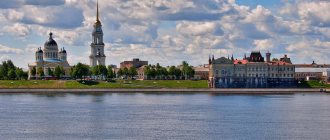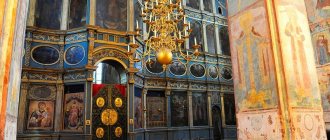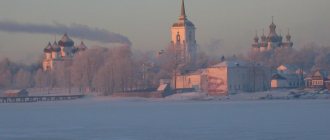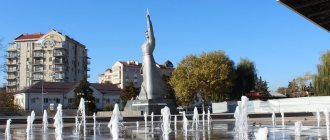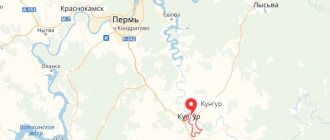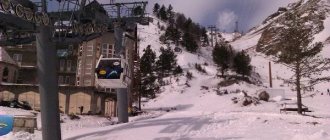Kaliningrad, Korolev, the space capital of Russia, the science city - this is all about the city in which I live.
Since 2014, I have been living in the city of Korolev, in the green Tekstilshchik microdistrict, in the Committee Forest. Not far from the house is the Podlipki-Dachnye railway station. Near the house is Bolshevskoe Highway, along which bus route No. 499 runs, connecting Korolev with the VDNKh metro station, which provides convenient transport accessibility to the capital.
I like life in Korolev, where after the hustle and bustle of Moscow, where I work and therefore spend most of the day there, this is where I relax. Our house is low-rise, so there is no noise or a lot of people in the yard. It’s cool when at night through an open window you hear not the rustling of tires and the roar of motorcycles, but only the noise of trees and bird trills. This is especially great in the early summer when the nightingales sing.
Carier start
In 1921, Korolev met the pilots of the hydraulic detachment and participated in aviation life, and already at the age of 16 he gave lectures on aviation. The first invention, created by a young man at the age of 17, was a non-motorized K-5 aircraft, recommended for construction. After graduating from construction school, the young designer entered the Kiev Polytechnic.
In 1926, Sergei transferred to a higher technical school in Moscow. In the capital, the guy participated in the organization of a glider school, became an instructor and tester of gliders, graduated from a pilot school, attended an aerodynamics club and developed light aircraft. Starting from his fourth year, Korolev worked in a design bureau.
In 1929, in the designer’s biography, a landmark meeting took place with Konstantin Tsiolkovsky, who advised Sergei to take up space flights, presented him with the book “Space Rocket Trains” and recommended contacting Friedrich Arturovich Zander, an engineer at TsAGI (Central Aerohydrodynamic Institute).
In February 1930, under the leadership of Andrei Tupolev, Korolev defended the design of the SK-4 aircraft. At the same time, the young scientist created the SK-3 “Red Star” glider, on which Nesterov loops were performed in free flight. In March 1931, he began working at TsAGI as a senior flight test engineer. The main event of this period was a meeting with Zander, who was testing the OR-1 engine.
Posted by Denis Veselkov on Saturday, January 8, 2022
Sergei Korolev's rocket
Later, Korolev headed the scientific and technical council of the Moscow Jet Propulsion Research Group. Primary attention was paid to missile weapons necessary to strengthen the country's defense capability. Sergei Pavlovich created the first design bureau, which went down in the history of rocket science.
An achievement of this period was the launch of the GIRD-09 liquid-propellant rocket, which rose to a height of 400 m. Korolev described the results of the work in the book “Rocket Flight in the Stratosphere.” Here he also highlighted the possibilities of non-space use of rockets for military and scientific purposes.
In September 1933, 26-year-old Korolev was appointed deputy director of the Jet Institute. The hopes of the Girdovites about the transition to serious projects were not justified, the scope of development was reduced, and in 1934 Korolev was relieved of his post. He remained to work at the institute as an ordinary engineer, focusing his efforts on the development of cruise missiles.
In 1936, Sergei Pavlovich was appointed chief designer of the RNII department that developed rocket aircraft. The scientist had amazing intuition, encyclopedic knowledge and experience. In particular, he was the first to substantiate the concept of a missile interceptor fighter, reaching high altitude in a few minutes and attacking aircraft that threaten the protected object.
Royal museums and theaters
Korolev is not only a citadel of science, but also a cultural center. The city has museums and theaters for people of all ages.
Royal History Museum
- Address: st. Tereshkova, 1.
The main Korolev Museum was formed in 2005 and united several old museums: space, history and local history. The opening was timed to coincide with the 60th anniversary of the Great Victory. The exhibitions cover the history of the space and defense industry in Korolev, and also demonstrate the life of the inhabitants of the Russian Empire and the Soviet Union. The museum features the largest collection of military and civilian vehicles.
Kostino Estate Museum
- Address: st. Ilyich, 1A.
At different times, interesting historical figures lived in the estate in the village of Kostino: the Dolgoruky princes and the revolutionary Vladimir Lenin. The modern building was built at the beginning of the 20th century; in 1922, the “Father of the Revolution” lived in it. At that time, Vladimir Ilyich was already seriously ill and soon moved to Moscow, where he died two years later.
In 1924, troubled teenagers, orphans and street children began to be brought to Kostino. The estate became a kind of labor correctional colony for juvenile delinquents. In 1939, the estate was transformed into a museum in memory of Lenin. Over time, the profile of the museum expanded to include local history and art exhibitions.
House-Museum of S.N. Durylina
- Address: Svobodnaya st., 12, Bolshevo microdistrict.
Sergei Nikolaevich Durylin is one of the most famous residents of Korolev, a writer and scientist who studied issues of philosophy and theology. In 1936, the writer settled with his wife in a small log house with an unusual semicircular projection.
Famous artists and writers often came to see the theologian, including the famous painter M. Nesterov. Here Sergei Nikolaevich ended his earthly journey.
In 1993, the house was transformed into a museum in memory of the poet; many personal belongings of the writer were preserved inside, such as furniture, books, photographs, as well as a rich collection of paintings by Soviet and Russian artists and ancient icons.
House-Museum of O.M. Kuvaeva
- Address: Bolshevskoye sh., 31.
Oleg Mikhailovich Kuvaev is an outstanding Soviet geologist, writer, screenwriter, who became famous thanks to his stories and essays about geological expeditions. The author’s most important work is the novel “Territory,” which has been reprinted dozens of times, translated into many languages and filmed twice in 1978 and 2014.
In the 60s, Kuvaev decided to leave geology and devote himself entirely to writing prose. In 1966, Oleg Mikhailovich settled in Kaliningrad near Moscow and lived there until his death in 1975. The writer’s sister and nephew founded a museum in the house in memory of the famous relative. The house contains the geologist’s personal belongings and various editions of his works.
Drama Theater
- Address: st. Tereshkova, 1.
Many residents of Korolev are not only intellectually, but also creatively gifted people who value theatrical art. The first performances in Podlipki began to take place back in 1924. Despite repeated changes in the names of the village and city, the theater remained the “Comedy and Drama Theater in Podlipki” until 2005.
For many years the repertoire consisted mainly of folk works. In 2005, the post of artistic director was taken by Andrei Kryuchkov, who radically changed both the direction of the theater and its cast.
Theater for Young Spectators
- Address: Kaliningradskaya st., 12.
Residents of Korolev care about cultural leisure not only for adults, but also for children. In 1994, the Theater for Young Spectators opened in the city. The first amateur performances took place back in 1976 at the children's club of the local House of Culture.
In 1983, the amateur theater received the status of “folk”, and 11 years later it became professional. In 2002, the Youth Theater moved to a separate building. Little queens not only watch fairy-tale performances, but also learn acting skills and participate in productions.
Read in the topic: The best attractions of the Moscow region
Arrest
In the summer of 1938, Korolev was arrested. The reason for the arrest was the testimony of engineers who worked in rocket science. The designer’s colleagues reported that he allegedly carried out activities that resulted in a weakening of the country’s defense power for the sake of fascism. The scientist was charged with two counts of Article 58 - the investigation indicated that since 1935 he had deliberately slowed down the development and delivery of new types of weapons for the Red Army.
Posted by Sergey Aksenov on Monday, April 12, 2021
Sergei Korolev in the camp
Sergei Pavlovich was sentenced to 10 years in forced labor camps, as well as 5 years of disqualification. In April 1939, the engineer was transported to Kolyma, to a camp where he did hard work in the gold mines. Poor living conditions and harsh climate soon had a negative impact on the designer’s health - he fell ill with scurvy. It was only thanks to the petition of Mikhail Usachev that Korolev was taken to the local medical unit.
Meanwhile, relatives fought for the release of Sergei Pavlovich, as a result of which the designer’s case was reviewed, and in 1939 he was sent to Moscow. Only in March 1940, having been delayed on the way due to illness, the scientist arrived in the capital, where he underwent new trials. Now he was sentenced to 8 years, after which he was transferred to a special prison, where he was able to continue his scientific activities.
Where to go for a walk in Korolev with children and adults
In addition to the “cosmic” attractions, tourists should visit the wonderful natural spots and cultural sites of the city.
"Elk Island"
- Coordinates on the map: 55.858333, 37.814444.
The urban district of Korolev borders on one of the first national parks in Russia. The reserve received its unusual name due to the large population of moose living in the local forests. In addition to the horned beauties, the park is home to foxes, muskrats, beavers, and various species of birds. Museums are open on the territory of the reserve, exciting excursions and horseback riding are held.
Park named after Marina Tsvetaeva
- Address: corner of Uritsky and Marina Tsvetaeva streets.
House-Museum of M.I. Tsvetaeva is located in a picturesque corner of the Bolshevo microdistrict. In 1939, the poetess collected brushwood here to light the stove, heat the house and cook food. Since then the place has changed. A semi-wild plot of land has turned into a well-equipped Literary Park with neat paths, benches for relaxation and bright flower beds. Large stone boulders with bronze tablets with poems by Marina Tsvetaeva are placed everywhere.
Square of Space Conquerors
- Address: corner of Oktyabrskaya and Kalinina streets.
The square near the Drama Theater is a great place for walking and relaxing. The area was landscaped in 2002, the paths are tiled, and bright flowers grow everywhere. Playgrounds have been built for children. In the center of the square stands one of the best sculptural compositions of the city - a monument to S. Korolev and Yu. Gagarin.
Central Palace of Culture
- Address: st. Tereshkova, 1.
Construction of the Palace of Culture began in 1958 on the initiative of Sergei Korolev. The scientist personally laid the first stone in the foundation of the future structure. The work lasted 6 years and in 1964 the Palace opened its doors to residents of the science city. Important cultural events, folk festivals, holiday concerts and even sporting competitions take place in the building itself and in the square next to it.
The Great Patriotic War
While in prison, Korolev acted as an assistant to Lev Theremin in the department involved in the design of unmanned aerial vehicles. Later, under the leadership of Andrei Tupolev, he developed several objects, among which were bombers and aerial torpedoes. In December 1941, Tupolev’s team was evacuated to Omsk. Here the Tu-2 aircraft was put into production.
The designer’s success contributed to his transfer to Kazan, where Korolev began improving rocket engines, which were then used in aviation. In 1943, the Pe-2 dive bomber flew - Sergei Pavlovich had a hand in improving the characteristics of this model. A year later, the engineer was released early by order of Joseph Stalin, and then began working as a teacher at the Kazan Aviation Institute.
Architectural monuments Queen
Korolev is a young city, but several architectural monuments of the 19th century have been preserved on its territory, as well as interesting examples of Soviet architectural thought.
Lapino-Spasskoye Estate
- Address: microdistrict Pervomaisky, st. Sovetskaya, 9.
The estate in the village of Lapino appeared in the 19th century thanks to the local manufacturer Panteleev. In subsequent years, the estate changed several owners, and the last owner of the mansion and adjacent buildings was entrepreneur A.N. Craft. After the change of government, the estate turned into socialist property and served the working people.
Several buildings have survived to this day, among which the three-story manor house and a small one-story outbuilding stand out. The main house housed a kindergarten; a music school still operates in the outbuilding. The mansion requires major renovations; the building is currently abandoned.
Culture and Leisure Center
- Address: Sovetskaya st., 71, Pervomaisky microdistrict.
The building of the cultural center in Bolshevo is an architectural monument of the 19th century. Initially, the simple brick building belonged to a dyeing factory and only in Soviet times became the main cultural attraction of the village.
For a long time, the youth club “Fakel” worked here; club members organized the first drama club in the settlement. Today the center accommodates more than a dozen creative groups, children's clubs and interest clubs.
First house of MZhK
- Address: ave. Koroleva, 18/6.
The youth residential complex is a unique example of Soviet architecture. From 1971 to 1991, massive construction projects took place throughout the Union, and houses were erected for young families. At the beginning of the all-Union experiment, young builders from all over the country came to Kaliningrad, the future Korolev.
It was here that the very first multi-storey building of the complex was built. The façade of the building, like a beehive, consists entirely of cell-balconies. Some of the apartments are still occupied by the families of the original residents.
ICBM designer
In May 1946, the Soviet leadership adopted a decree that marked the beginning of the development of rocket science. In Kaliningrad near Moscow (today Korolev), the State Union Research Institute of Jet Weapons (NII-88) was created. Sergei Pavlovich was appointed one of its main designers.
Then events developed rapidly. On Stalin's instructions, they created a copy of the German rocket. Tests were carried out of A-4 missiles assembled from captured units at the Nordhausen and NII-88 institutes. The first R-1 missiles were tested, reproducing the A-4 using their own materials and according to domestic documentation. Korolev turned out to be not only a talented designer, but also an organizer who managed to coordinate the work of all departments.
Posted by Denis Veselkov on Saturday, January 8, 2022
Sergei Korolev and Valentina Tereshkova
Mastering the heights of military technology began with the creation of a missile with a range of 300 km. In 1948, the R-2 missile was created with a range of 600 km, capable of reaching some American bases. As a result of further developments, the R-5M RDD appeared with a range of 1200 km and a nuclear warhead. The strategic missile was tested at the Semipalatinsk test site on February 2, 1956.
Korolev's main activity was the development of multi-stage intercontinental missiles. The R-7 ballistic missile (ICBM) he created had a range of 8 thousand km, and the modernized version R-7A had a range of 12 thousand km. Liquid ICBMs were inferior to American solid fuel ones, so they created an experimental rocket RT-1 using solid fuel.
History of the city of Queen
In the 12th century, settlements of Finno-Ugric tribes settled on the territory of the city, along the banks of the Klyazma River, and an ancient water trade route passed from Moscow to the Vladimir-Suzdal principality with access to the river. Volga (Itil)
Bolshevo railway station in the 19th century.
In 1895, the Mytishchi-Shchelkovo railway line was built and the railway station was opened. Sublips.
The city of Korolev arose from the dacha village of Podlipki, which in 1928 was classified as a workers' settlement and was named Kalininsky (in honor of the All-Union headman M.I. Kalinin), and in 1938 the village of Kalininsky became the city of Kaliningrad.
On July 8, 1996, the city was renamed from Kaliningrad to Korolev in honor of Sergei Pavlovich Korolev. And memories of Kalinin remain in the name of the street and the central palace of culture on the street of the same name.
The square in front of the House of Culture named after M.I. Kalinina in Korolev.
After absorbing the city of Yubileiny, Korolev in 2014 became for some time the third city in the Moscow region in terms of population after Balashikha and Khimki, but then it was pushed to 4th place by Podolsk, which in 2015 absorbed the city of Klimovsk and the village of Lvovsky.
The closed part of the Eastern Water Canal, designed to deliver water from the Uchinsky (Akulovsky) reservoir to Moscow, runs through the territory of Korolev. The area adjacent to the water utility is a sanitary protection zone.
Cosmonautics
Military developments became for Korolev a condition for further space exploration. On October 4, 1957, for the first time in the history of earthlings, an artificial satellite was launched. A month later, on November 3, a second satellite was sent into orbit, with the dog Laika on board. On April 12, 1961, Yuri Alekseevich Gagarin flew into space. Specialists from the Council of Chief Designers, created by Korolev, were involved in the implementation of these projects.
Yuri Gagarin and Sergei Korolev.
Posted by Alexander Chernilevsky on Monday, May 3, 2021
Sergei Korolev and Yuri Gagarin
During the researcher’s lifetime, they successfully carried out seven more flights of manned spacecraft, launched satellites, space research stations and systems. The engineer also developed ideas for conquering the Moon and Mars.
Science City Korolev - the space capital today
Monument to space explorers in the city of Korolev.
But first I want to tell you a little about the city itself
Korolev (until July 8, 1996 - Kaliningrad) was founded on December 26, 1938 - a city in the Moscow region of Russia, since April 12, 2001 it received the name science city. The city has a population of 224,348. This is the largest science city by population. Korolyov is unofficially called the space capital of Russia.
The huge space enterprise Energia is located and operates here - the heart of the space industry, and in our city the MCC (Flight Control Center) is the brain of the space industry, so the name is rightful.
Mission control center in the city of Korolev.
The city is located northeast of Moscow, 23 km from the center and 6-7 km from the Moscow Ring Road along the Yaroslavskoye Highway.
Regular flights to Moscow create convenient transport accessibility of the city and the capital.
From Bolshevo and Podlipki stations there are direct social buses No. 499 and 392 to the VDNH metro station. Without traffic jams it is only 20-25 minutes. Two more districts of the city: Silikatny and Michurinsky are connected to Moscow by minibuses No. 576 and 565. Bus fares are about 90 rubles. Along the route, buses pass another transport hub - Rostokino.
Buses, commuter trains and the MCC line (Moscow Central Circle), which connects all lines of the Moscow Metro, are connected here. So everything is fine with transport. The cost of a ticket on the electric train from Korolev to the Yaroslavsky station (one of three on Komsomolskaya Square) is 75 rubles, and to the Rostokino station - 44 rubles.
You can also easily reach neighboring cities by train or bus: Mytishchi and Pushkino, Ivanteevka and Fryazino, Monino and Fryazevo.
Map of the Moscow region indicating the city of Korolev.
The Losiny Ostrov National Park adjoins the city to the south. The Klyazma River flows in the city, as well as the source of the Yauza and Pekhorka, as well as several small rivers and streams, such as: Ichka and Budaika (in the part of Losiny Ostrov). The forest area within the city covers an area of 3800 hectares. Also, within the city limits is part of the Yauzsky Wetland Complex tract.
About a hundred moose live on Losiny Island.
Personal life
The designer’s personal life turned out to be relatively calm and harmonious. Sergei Korolev was married twice. The engineer first registered a relationship in August 1931 with classmate Ksenia Vincentini; in 1935, his wife gave birth to his daughter. In 1948, the family broke up.
Posted by Total dictation on Thursday, February 13, 2020
Sergei Korolev with his wife
The researcher met his second wife Nina Ivanovna Kotenkova, a translator at NII-88, at work.
Death
The chief designer passed away on January 14, 1966. The cause of death was determined to be cardiac arrest during surgery. During surgery to remove polyps in the intestines, unexpected circumstances suddenly emerged (the patient was diagnosed with a tumor, and there was a need for emergency general anesthesia to remove the tumor). Difficulties also arose with intubation (according to some reports, after interrogations in the late 30s, the scientist had a broken jaw, which remained inactive). Korolev’s body could not withstand such a load.
Memory
In memory of the designer, the house in Zhitomir where Sergei Pavlovich was born was converted into a museum. A memorial museum was also opened in Moscow. The engineer’s name is given to the city where he worked, as well as many streets and avenues not only in Russia, but also in the CIS countries. Monuments to the scientist have been unveiled in different parts of the world (some sculptures depict Korolev together with Yuri Gagarin, for example in Taganrog, in front of the building of the Radio Engineering Institute). Space objects are also named in honor of the space conqueror.
Posted by Denis Veselkov on Saturday, January 8, 2022
Grandson and great-grandson of Sergei Korolev with Elon Musk
The largest conference room at SpaceX, headed by Elon Musk, bears the name of the researcher. This American entrepreneur, billionaire and engineer is compared by many to Sergei Pavlovich in terms of the progressiveness of the ideas proposed and the objects created for space exploration. In 2021, the American gave a tour of the plant producing Crew Dragon ships for the grandson and great-grandson of the Soviet designer. Musk noted that together with his team, when developing innovative developments, he turned to Korolev’s achievements.
The figure of Sergei Pavlovich (or his prototype) appears in Soviet and Russian films. At different times, the actors Georgy Zhzhenov, Kirill Lavrov, Vladimir Ilyin and others managed to try on the image of the designer. Natalia Sergeevna’s daughter also dedicated the book to the biography of the scientist.
What to see in the city of Korolev in 1 day
The vast majority of people associate Korolev with science and space. Tourists come to the science city to get acquainted with the achievements of Soviet and Russian scientists. The city is also visited by fans of Marina Tsvetaeva, because it is here that one of the main museums in memory of the great poetess is located.
Mission Control Center
- Address: Pionerskaya st., 4, bldg. 1.
Korolev is the citadel of the Russian space industry. The famous MCC has been monitoring the movements and actions of spacecraft since the 60s. These days, the center hosts excursions where visitors can see with their own eyes the work of specialists and watch a live video broadcast from space. When visiting the MCC, you must turn off your mobile phones.
RSC Energia Museum
- Address: st. Lenina, 4A.
The modern Rocket and Space Corporation (RSC) is a direct descendant of the famous design bureau founded by Sergei Korolev. The corporation operates a museum dedicated to the history of space exploration. It contains the very first samples of spacesuits, artificial satellites, ballistic missiles and the real Vostok-2 spacecraft. In a separate room, experts reproduced the furnishings of Korolev’s office.
House-Museum of M.I. Tsvetaeva
- Address: st. Marina Tsvetaeva, 15.
Modern Korolev consists of several settlements, one of the oldest and most significant among them is the village of Bolshevo. Here, under the tall pines, a green wooden house with large windows was lost. The small mansion is the place where the famous poetess Marina Tsvetaeva lived in 1939 after returning from France.
Marina Ivanovna spent less than six months in the village, but the events that occurred during this period of time had a terrible impact on the future life of the long-suffering woman. After 17 years of emigration and life in poverty, Tsvetaeva was forced to return to her homeland, which greeted the poetess harshly and only prepared new challenges for her. After the arrest of her husband and daughter, Marina Ivanovna was left alone with her youngest son and had difficulty surviving without the help of family and friends.
The Tsvetaeva Museum began operating in 1992. The house contains objects that are related to the life and work of the famous poetess. The rooms have preserved original furniture and dishes that belonged to Marina Ivanovna. Near the entrance to the house, guests are greeted by a stone sculpture of Tsvetaeva.



